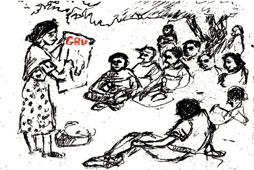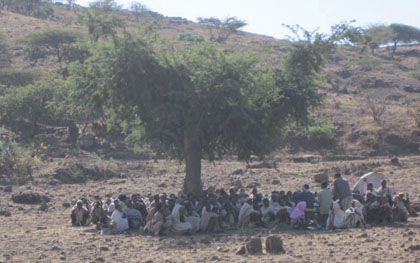Your role in preventing gender-based violence
Look at the list of factors that make GBV likely (Section 6.2). How can you help to make girls and women in your community less vulnerable?
Educating women and involving community members, particularly men, are good ways to prevent GBV in your community.
Educated women are less likely to have undesired life outcomes. Providing girls with educational opportunities improves their status in the community. You can help by encouraging parents to send their daughters to school and by encouraging girls to go to school and to continue with their schooling. Girls and women often lack information on reproductive health issues, but education gives them necessary knowledge. You could also involve women as members and leaders of community-based health committees.
Involving boys and men in fighting GBV will have a lasting effect. As you have already learned, it is usually boys and men who inflict violence on girls and women, so any effort to abolish GBV without their engagement will not be successful. Ensure that you talk to them about GBV (Figure 6.6). Help young boys to understand that boys and girls are different but equal and everyone deserves equal respect.

As most types of GBV are carried out under the cover of culture and tradition, and are deeply rooted in the community, addressing this issue requires engagement of the community as a whole. You can use various methods to mobilise the community and improve their awareness and behaviour. Community conversation is a good medium to fight GBV. It is also useful to get an influential community or kebele leader to tell community members of the advantages of improving women's health by fighting GBV and to explain that Ethiopia's ministers and religious leaders want all Ethiopians to have full and equal rights (Figure 6.7).
There is more discussion on the use of community conversation in Study Session 12 of this Module.

In the next section, you will learn about the care that should be given to victims of sexual abuse.